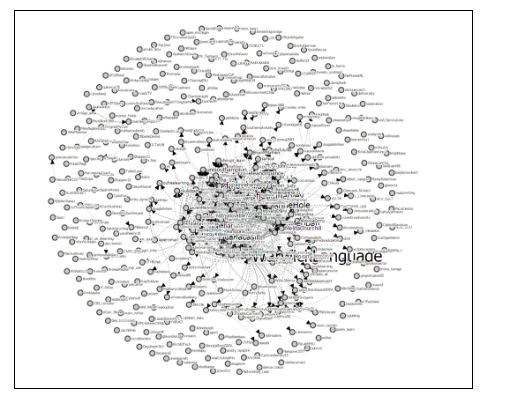Twitter is a great companion for academic conferences – before, during and after the event, the micro-blogging platform can expand and deepen the experience.
Building a conference community with a hashtag #
Conference organisers will usually identify a suitable hashtag and start tweeting messages in advance of the big day. Twitter can be used to publicise the call for papers, the programme and registration. In the process it can begin to build a community around the conference. If you are organising an event, these Tips on Using Twitter for Conferences and Events by Sue Beckingham (@suebecks) include advice on selecting and using a conference hashtag.
Live-Tweeting
On the day there are likely to be some people ‘live-tweeting’, that is, reporting on the conference as it happens by tweeting. There is an etiquette around conference tweeting:
- Ask permission – unless organisers or presenters have explicitly said it is okay to tweet about what is being presented.
- Always attribute quotes – preferably using the speaker’s Twitter name (handle).
- Always include the conference hashtag.
- Remember tweets are completely public – so be polite and professional.
For more on how to tweet at conferences see:
- ‘Live-tweeting at academic conferences: 10 rules of thumb’ by Ernesto Priego for The Guardian
- ‘Ten Simple Rules of Live Tweeting at Scientific Conferences’ (Ekins S, Perlstein EO (2014), PLoS Comput Biol 10(8): e1003789. doi:10.1371/journal.pcbi.1003789
Before you start tweeting at a conference warn your Twitter followers. For example:

Building the conversation
For those attending an event, Twitter provides an additional space for interaction and networking. Delegates can compare notes about parallel sessions, continue discussions and develop the conversation by linking to related resources.

If you cannot be at the event, following a conference hashtag is a great way of participating remotely. It is also good to bring other voices into conference conversations (see ‘Being there – or not?’). As this visualization of the #openbadgesHE hashtag shows, there can be varying degrees of interaction. This conference had 150 delegates attending, but the visualisation shows nearly 3 times that many nodes – each representing a use of the hashtag.
If you are speaking at a conference, you might want to consider sharing your slides on Twitter at the start of your session (services such as Hootsuite and Buffer will let you schedule tweets in advance).
Tweeting as note-making
Live tweeting from a conference can be an engrossing activity and you may be wondering how to find time to tweet whilst listening and making notes. I use Twitter as my note-making system. Key messages I want to take away, I tweet. If others make good points or ask interesting questions I want to think about later I ‘like’ or retweet them. At the end of the event I have a collection of tweets that sums up the event for me.

To collect my Twitter notes and present them in a useful format I use Storify.
Storify
Storify is a free service that lets you create stories from social media posts (a paid version for teams includes the option to make stories private). It is most commonly used to collect everyone’s social media interactions around an event, but you can also use it to create your own story of a conference.
Once you sign up with an email address and choose a username and password you can start to create a new story. The first time you create a story from tweets you will need to connect your Twitter account, but this only takes a couple of clicks. You can also use Storify to gather content from other social media. Watch this video clip to find out more (1.22).

Select the Twitter icon and enter your search term.
Storify will then find the tweets using that hashtag for about the last 10 days. You can select just the ones you want or choose to ‘add them all’. You can reorder to show the oldest or newest first, shuffle or delete individual tweets and add some text. Once you have given your story a title you are ready to publish. Storify will add the first image from the tweets you have included as a header image.
Once your story is published it will be public and anyone can find it by searching. You can share your story on social media and/or export it in a number of formats, most usefully as a pdf. If you want, you can notify the people you have quoted in your story.
Here is one I made earlier – it is my Twitter notes from the #openbadgesHE conference mentioned above.

https://storify.com/AnneHole/my-openbadgeshe-notes
Storify can also be used as another tool for learning through finding, choosing, sorting and sharing.
If you would like to discuss ways that you can use Twitter and/or Storify in your teaching and learning at Sussex please contact your school learning technologist or tel@sussex.ac.uk.




[…] Read the full story by University of Sussex Technology Enhanced Learning Blog […]